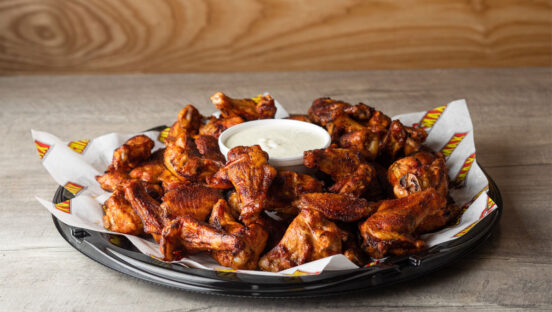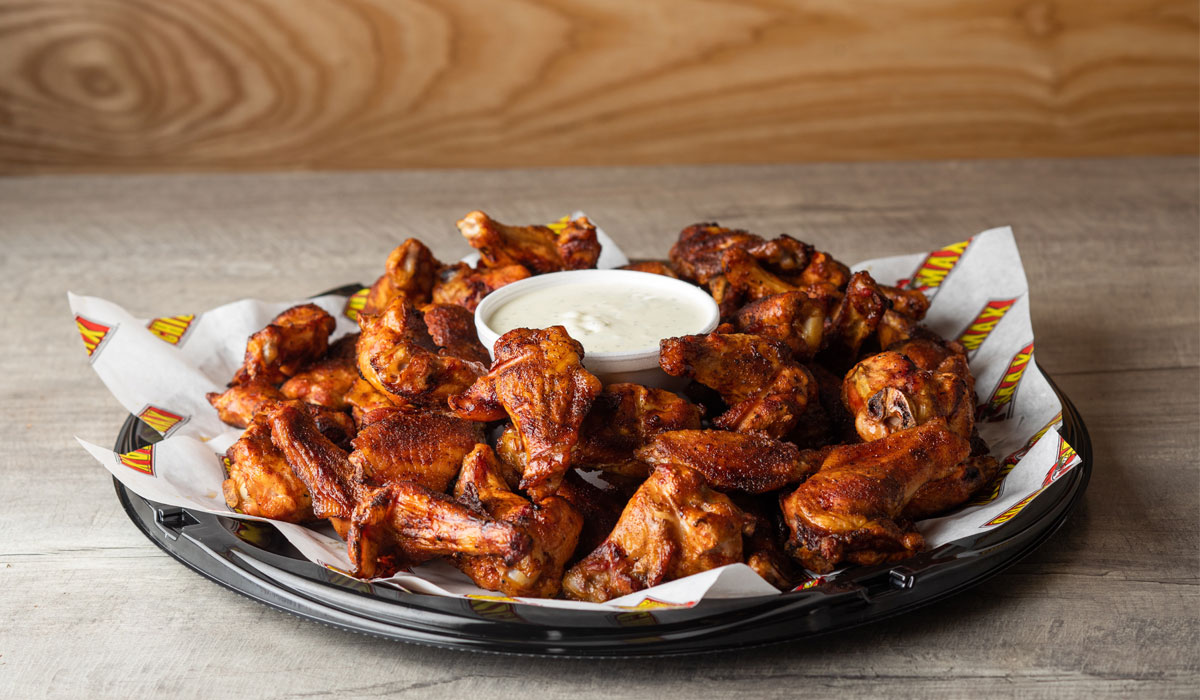A lot of quick-service restaurants have been “winging” it over the past couple years.
As the price of bone-in chicken wings soared in 2021, wing-centric eateries had to adjust quickly. And though bone-in wing costs have dropped this year to pre-pandemic levels, operators had to switch gears again, as the price for chicken breasts, which provide the meat for boneless wings and tenders, soared—as have the costs for many other commodities as well as labor.
The past two years “have been a constant juggling act” in terms of pricing, supply, staffing, menu development, and more, says Gus Malliaras, founder and owner of Detroit Wing Company, based in Eastpointe, Michigan.
Most wings restaurants took at least one price hike this year or in 2021, but stress on margins remain. In addition, rising gas prices and other inflationary pressures on consumers left little price elasticity. “Right now, there’s not a whole lot of room to move,” he says.
Dan Leyva, chief wing officer at Wings Over, sums up the supply price picture succinctly: “Everything that can go up at this point is going up.” Like many restaurants, “we’ve absorbed the majority of their costs,” he adds.
While some industry veterans have dealt with inflation in the past, it’s a new phenomenon to younger ones, who may have experienced price increases on only a couple of items at a time.
“I have franchisees who have never seen inflation,” says Sam Ballas, chief executive and managing director for East Coast Wings + Grill, based in Winston-Salem, North Carolina. “[At the company’s brand conference] I took 45 minutes telling them what it is and how we got here.”
Inflation is something brands are having to negotiate and continue battling, adds Michael Skipworth, chief executive of Addison, Texas-based Wingstop, the sector’s leader with some 1,800 units, including about 1,550 in the U.S. And with consumers facing higher food and gas prices, it is incumbent on restaurants to “provide value.”
Overall, however, experts believe the condition of the wings sector is strong.
“I would say wings are as popular as ever,” says Matt Ensero, chief executive of Wing It On!, a Raleigh, North Carolina-based brand. “If the past 12 months have taught us anything, wings are here to stay,” adding they have become a part of American food culture.
Operators adapted to the pandemic and its aftermath by relying on stable and sometimes additional suppliers, adding menu items, taking advantage of takeout and delivery options and enhancements, and offering profitable meal deals providing customer value.
Helping is the drop in bone-in wing prices, which stood at more than $3 a pound a year ago, compared to less than $1.75 a pound pre-pandemic, according to the U.S. Department of Agriculture. Prices have been declining this year to below $1.75 a pound by July.
Bone-in wing cost deflation is providing better margins—experts say for perhaps the first time—than for boneless wings and tenders, which have seen prices rise sharply over the past year in part due to higher demand for white-meat chicken.
“We can lean in and give some of that deflation back to maintaining the experience,” Skipworth says in the wake of the cost of boneless, skinless chicken breasts doubling during the first half of the 2022 and the cost of tenders jumping 28 percent.
Maintaining an adequate supply of wings and other items, from spices to carryout boxes, also became important in the wake of the pandemic’s chicken crunch and other supply chain issues. “I know more about logistics now than I ever did in my life,” Malliaras says.
In addition to using established suppliers, for instance, East Coast Wings “went to sources we never used before,” Ballas says, including buying 3,500 pounds of wings from a Chile supplier at a very good price. “You get a great win from that.”
Wingstop is contemplating going even further by potentially investing in or even acquiring a poultry production plant, which could provide about 20 percent of its wings buy while also making costs more stable and predictable.
“It’s innovative and disruptive,” Skipworth says of the idea.
Some operators added wing-style thighs as a lower-cost option during the chicken crunch, and thighs have remained on some menus. Eateries also innovated around new sauces and items like chicken sandwiches and nuggets—all unique due to each chain’s many proprietary flavorings.
“The question is how do we make the pie bigger versus just raising prices,” Leyva says, noting Wings Over! added a price-sensitive tender sandwich, using only one new item, a split-top bun, with guests choosing one of the chain’s more than two-dozen flavors for the tender.
Although consumers have been fairly accepting of price hikes, it only goes so far, Ballas notes. One East Coast Wings location in the Southeast was allowed to take price increases equal to where they should have been, and “the store lost 35 percent of its sales in the four-week run.”
To battle some higher costs, several wing-centric operators are using meal deals and bundles to balance the higher cost of boneless wings or tenders with better margin side items. Others have eliminated non-essential items that didn’t sell well.
“We look at the menu every month,” Detroit Wings’ Malliaras states. That is likely to continue not only as inflation continues but as the specter of a recession looms on the horizon.
Restaurants have extended their menus by adding new sauce varieties to their already lengthy list—literally dozens—of sauce offerings. A few opted for a bit of out-of-the-box thinking.
Wing It On!, for instance, sought out a menu item not directly tied to protein. “We jumped into the test kitchen and considered factors like popularity, cost, and impact on operations,” Ensero says. The result: vegetable and chicken dumplings, sauced like a wing. “We think we hit a home run,” he says of the high-margin addition.
Alongside new ideas that revolve around the menu, many of the changes operators made during the pandemic, including customer dining habits, will go on into the future.
“We are optimizing our business model—how do we improve pickup and delivery to provide fresh food,” Leyva says. As a result, the company, with units across the Northeast and Midwest, switched to waffle fries that travel better and focuses on better packaging and improved delivery.
After all, he adds, “The guest behavior of ordering online and pickup is here to stay.”









